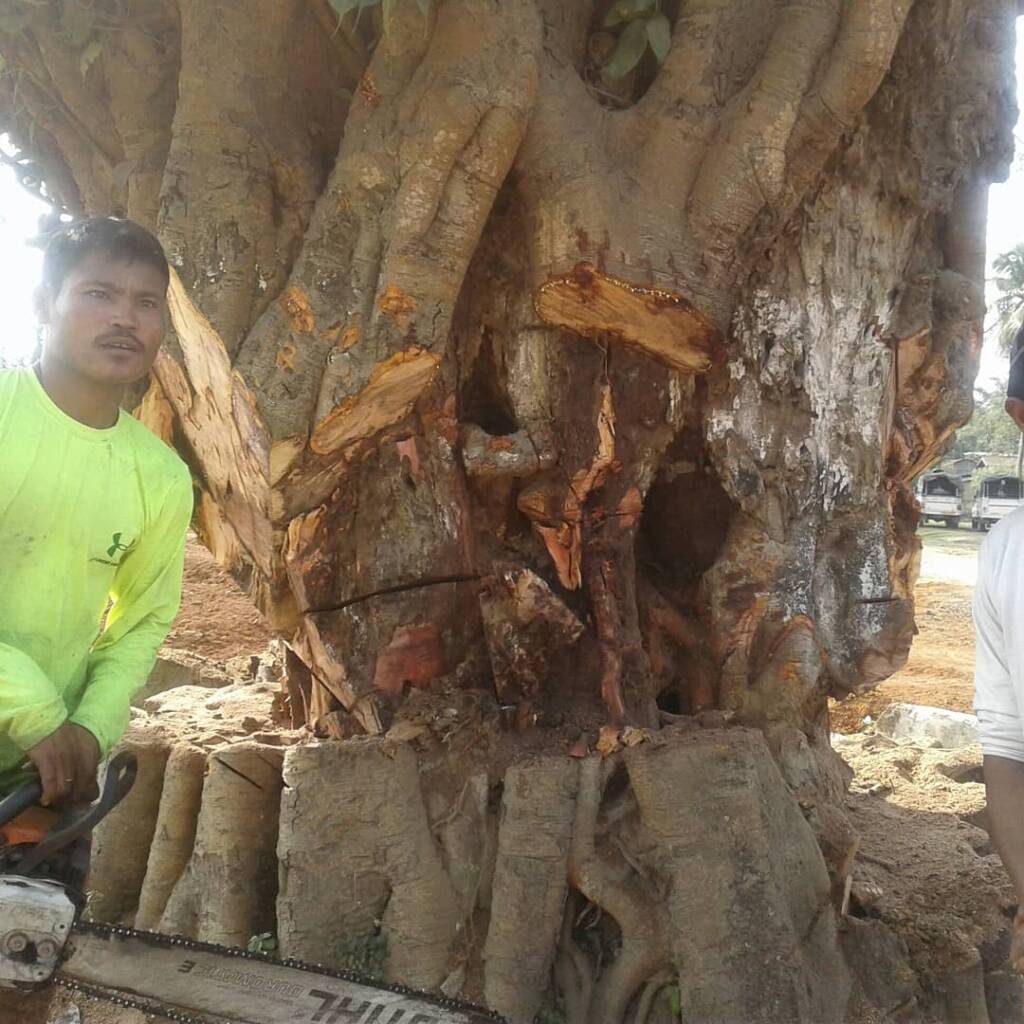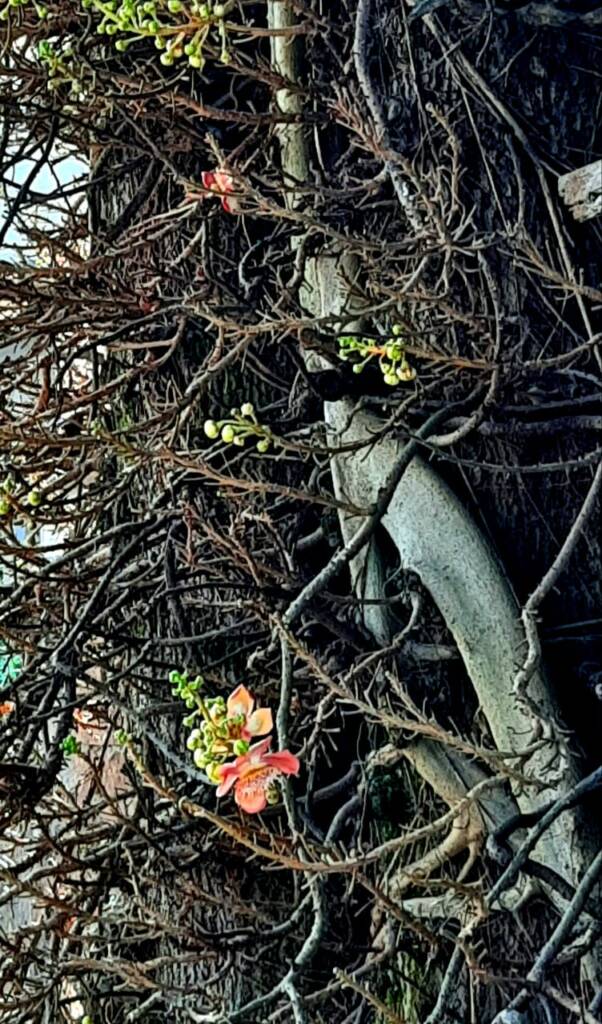Conservation and protection of Assam’s big and aged heritage trees
On February 23, 1944, Anne Frank wrote in her famous diary, “Nearly every morning I go to the attic to blow the stuffy air out of my lungs, from my favorite spot on the floor I look up at the blue sky and the bare chestnut tree, on whose branches little raindrops shine, appearing like silver, and at the seagulls and other birds, as they glide on the wind.” Anne also wrote—“As long as this exists, I thought, and I may live to see it, this sunshine, the cloudless skies--while this lasts I cannot be unhappy.” The teenager had made reference to the tree, that helped keep her hopes alive-- more than once in her diary.
The chestnut tree at the centre of Amsterdam that carried Anne Frank’s legacy would draw the attention of the whole world even if a branch needed a little pruning! The grand old tree received the adoration, admiration and attention of generations until it was snapped by wind and rain in August, 2010. The tree that widely came to be known as the Anne Frank tree was diseased by a fungus that caused most of its trunk to rot. Even a steel case around its trunk failed to support the monumental tree that has grown over 150-years! Seeds from that tree had been preserved and taken to be planted at sites around Europe and the USA.
Every mention of that legendary chestnut tree brings to my mind an old Banyan tree nearer home! The Banyan of Mayong, in Central Assam's Morigaon district is said to have existed over the last three centuries!
There are tens of millions of trees in our country with the existence for a hundredth year. Let alone preservation and protection—these are yet to be identified. The proper listing and conservation of these heritage trees have been of utmost importance owing to their precarious existence in the face of felling when it comes to road expansion and other infrastructure projects.
Unique ecosystem
The Union Ministry of Environment, Forests and Climate Change gave permission to cut a whopping 1, 09, 75, 844 trees for development projects between 2014 and 2019. This was told to the Lok Sabha by the then Minister of State for Environment Babul Supriyo. The indiscriminate felling included centuries-old Peepals and Banyans with trunks several feet of circumference revealing rings of their age.

The government envisioned compensating for the loss by an increase in forest/tree cover area by five million hectares (mha), to enhance the quality of another five mha of forest cover and thereby achieve annual sequestration of 50-60 million tonnes of carbon annually under the Green India Mission.
Trees are unparalleled when it comes to storing oxygen to moderate climate by removing carbon dioxide from the atmosphere. However, we tend to forget that trees are not for carbon sequestration alone. We often overlook the biological significance of a tree. A tree is a unique ecosystem. It is quite fascinating to see how a tree provides refuge to other creatures! We are not counting the very many bird and insect species and epiphytes that lost their habitats with the felling of each tree! Wide canopied trees provide shelter for many avian, animal, reptile, insect, and plant species and make a remarkable habitat for epiphytes like ferns and orchids. Their flowers are nectar source for bees and butterflies.
The 700-year-old Bakhar Bengena
Assam’s rich biodiversity comprises some unique botanical species that are not native to the region. Yet, they are there for centuries. For the heritage status of a tree-- age and origin, legends and beliefs are counted along with botanical characteristics and sometimes the historical background associated with it. The Bakhar Bengena at Bakata in the Sivasagar district is a classic example of a heritage tree. The 700-year-old Bakhar Bengena is said to have been planted by the Barahi king Mahamanikya of Jayantipur. The 30-feet botanical marvel got its scientific name Rendia ulizinsa from renowned botanist UN Kanchilan in 1939.
The Canonball tree (Couroupita guianensis) or Naagchampa that has religious and cultural significancein Indiais not native to Assam. I remember seeing a Naagchampa tree in Halmira Tea Estate in Golaghat district many years ago. There had been another that I had seen in front of the administrative building of Guwahati University. But the tree-- one of a few in the entire state--was axed to make way for a new block of building! Recently, I could capture in my camera yet another Naagchampa tree in its full bloom in the Panbazar area of Guwahati i!

Along the Brahmaputra, there are trees planted by British officers that have existed for over a century now. The natural beauty and wide canopy of the Rain Tree or Albizia saman (Samanea saman)--which provides both shade and beauty-- makes it the first preference in many countries where it is seen planted in important public places--hospitals, community halls, parks, schools-colleges and by the side of the roads. It has always been the first choice in agro-forestry---in tea plantations where it is preferred as crop shade and for nitrogen enrichment of the soil.
A species of flowering tea in the pea family, a mature Albizia saman with a crown diameter of 15 meters absorbs 28.5 tons of carbon dioxide annually. The tree’s light-sensitive leaflets close together in rainy weather (hence the name rain tree) and also in the evening till dawn. This tree is known as “Pukul Lima” in Malay meaning a five o’clock tree when the leaves close together.
Most of the Albizia saman trees identified in Guwahati are planted during British rule and found to be the oldest among surviving plant species in the city. These trees have already reached an age between 85 to 100 and therefore call for urgent protection.
Steps to protect “heritage trees” of Assam
Proper identification, maintenance and preservation of such trees lay not only on the forest department and civic bodies alone. Much responsibility rests on us. Underlining the need for the conservation of heritage trees in the city--otherwise prone to felling in the name of road expansion and other infrastructure projects—a campaign was launched to enlist some 100 years old trees in Guwahati.
Last November, members of the Assam State chapter and Kamrup Chapter of the Indian National Trust for Art and Cultural Heritage along with Cotton University embarked on a project of listing 100-year-old trees. The listing of this “heritage tree” exercise was carried on with the collection of general information like location, geo coordinate, surroundings, ownership; the name, local name, scientific name of the species with a digital photograph; it’s biological, ecological, religious and cultural significance; other unique features (if there has been any); and finally, condition assessment and prioritizing for protection management. Our group also included student members so that they could be introduced to the natural heritage like these big and very old trees in the city.
Exactly after a year, the state forest department in a positive development has embarked on a collaborative exercise among farmers, companies and private institutions to protect trees outside forests and to accord protection to big and aged ‘heritage’ trees of the state. This is indeed a positive step when it comes to the protection of our natural heritage. But much would depend on the ‘sincerity’ of the department and the agencies entrusted with the job.



